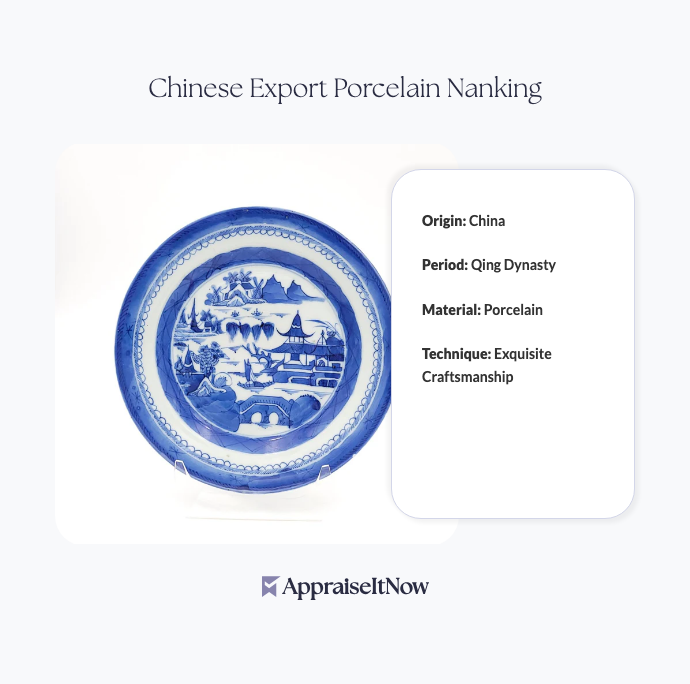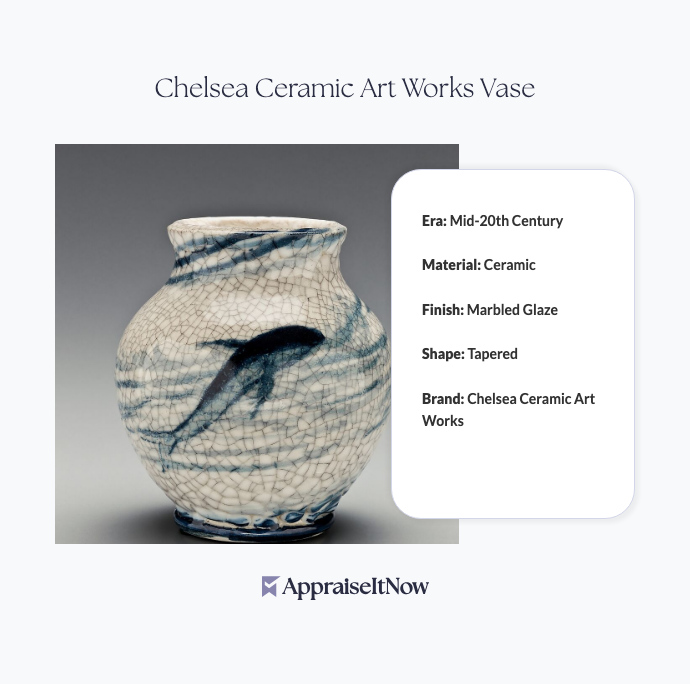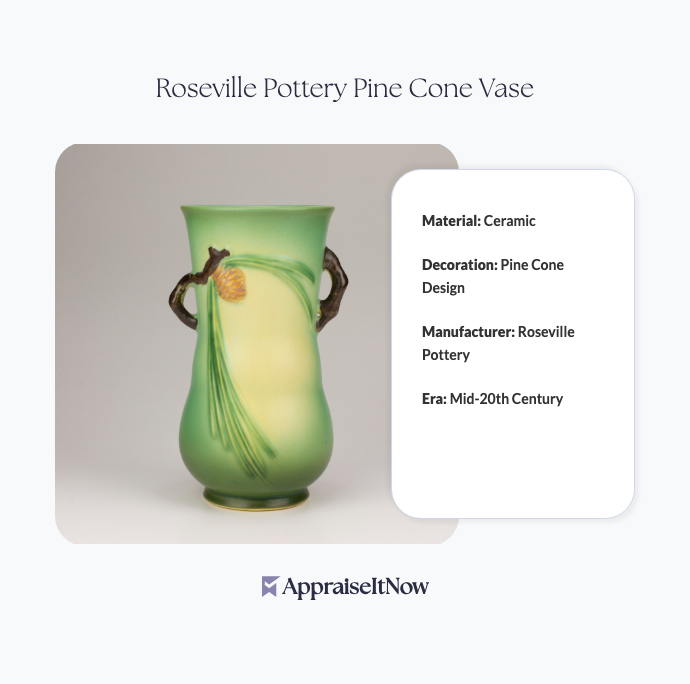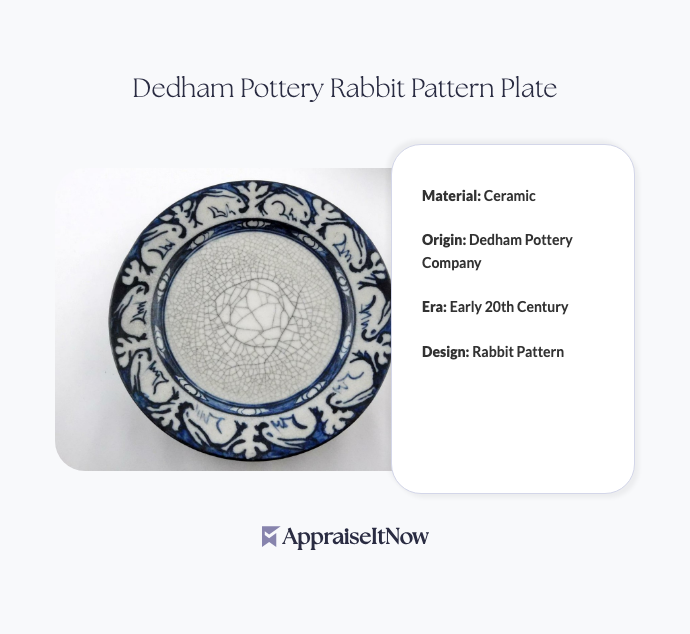<h1>How to Get Your Chinese Export Porcelain Nanking Appraised</h1>
<p>Chinese Export Porcelain Nanking represents some of the finest ceramic artistry from the Qing dynasty, commanding valuations between <strong>$1,000 and $5,000</strong> for quality examples. If you own one of these decorative treasures—whether a vase, bowl, or plate—understanding how to get it properly appraised ensures you know its true market value for insurance, sale, or collection purposes.</p>
<h2>What Makes Chinese Export Porcelain Nanking Valuable</h2>
<p>Your Nanking porcelain's worth stems from multiple factors that appraisers carefully evaluate. These pieces were produced in the <strong>Nanking region of China during the early 19th century</strong> specifically for Western markets, making them rare examples of cross-cultural artistic collaboration. The intricate designs, vibrant colors, and exceptional craftsmanship reflected advanced techniques mastered by skilled Chinese artisans who understood what European and American collectors would treasure.</p>
<p>The term "Nanking" itself comes from the geographic origin of production and export, though understanding Chinese porcelain identification requires familiarity with maker's marks, decorative patterns, and period-specific techniques. When evaluating your piece, appraisers recognize that Nanking porcelain occupies a unique position between decorative <a href="/types/household-goods">household goods</a> and serious <a href="/types/artwork">artwork</a>, requiring specialized knowledge to properly assess.</p>
<div class="callout tip"><p><strong>Value Driver</strong></p>
<p>Pieces with clear provenance documentation—showing they've been in Western collections since the 19th century—often command 20-30% premiums over undocumented examples.</p></div>
<h2>Identifying Your Nanking Porcelain</h2>
<p>Before pursuing appraisal, you should understand what characteristics define authentic Chinese export porcelain from the Nanking period. True Nanking displays specific visual and tactile features that distinguish it from later reproductions or pieces from different regions.</p>
<p><strong>Visual identification markers</strong> include the distinctive blue underglaze decoration (often called "Nanking blue"), hand-painted scenic or botanical motifs, and a particular palette of cobalt blue with occasional red and gold accents. The glaze typically shows a slightly warm tone rather than the stark white of later porcelain, and authentic pieces exhibit evidence of hand-painting rather than transfer printing. Your piece's bottom should display either Chinese characters or, if made for export, possibly European or American retailer marks.</p>
<p>When you're wondering "how do I know if my Chinese pottery is valuable?", condition and completeness matter significantly. A Nanking plate with minor rim wear remains highly valuable, while a vase with cracks or significant restoration loses considerable worth. Professional appraisers assess these condition factors using standardized <a href="/blog/what-do-appraisers-look-for-when-appraising-antique-artwork">artwork appraisal</a> methodologies that account for age-appropriate wear while identifying problematic damage.</p>
<h2>The Role of Provenance and Documentation</h2>
<p>Understanding your porcelain's history directly impacts its appraisal value. Can you trace ownership back multiple decades? Documentation showing Western collection history—particularly if the piece appears in historical photographs or belonged to notable collectors—substantially increases market worth. When evaluating how to identify Chinese export porcelain authentically, provenance serves as one of the strongest authentication tools alongside technical ceramic analysis.</p>
<p>Collectors who possess export Nanking with documented provenance benefit from appraisals that reflect this historical significance. The question of provenance in art valuation goes beyond mere ownership records; it establishes cultural and historical context that sophisticated collectors actively seek. Our resource on <a href="/blog/exploring-the-role-of-provenance-in-art-appraisals-assessing-historical-significance">understanding the role of provenance in art appraisals</a> details how documented ownership histories influence market positioning.</p>
<div class="callout note"><p><strong>Documentation Matters</strong></p>
<p>Even family letters, bills of sale, or auction house catalogs from the 1800s-1900s strengthen your appraisal and can justify higher valuations than undocumented pieces.</p></div>
<h2>Why Professional Appraisal Matters for Nanking Porcelain</h2>
<p>Attempting to value your Chinese export porcelain through online price guides or comparable listings overlooks critical variables that trained appraisers understand. The question of "how to determine the value of Chinese porcelain" involves technical expertise in ceramic composition, period-specific production techniques, market demand, and condition assessment that experienced professionals apply systematically.</p>
<p>Professional appraisers bring specialized knowledge of the most sought-after Chinese pottery marks, period variations within Nanking production, and how regional markets value specific forms and decorative schemes. They recognize that a Nanking plate with exceptional hand-painted details commands different pricing than a utilitarian bowl, and they understand how the five great wares of China influence broader collector interest in Qing dynasty ceramics.</p>
<p>Beyond valuation, certified appraisers provide documentation suitable for insurance purposes, estate planning, or potential sale. Whether you need USPAP-compliant reports for your homeowner's policy or detailed condition descriptions for auction house submissions, professional <a href="/blog/appraisals-for-fine-porcelain-and-ceramics-valuing-delicate-artistry">porcelain and ceramics appraisals</a> deliver the credibility and detail that institutions and insurers require.</p>
<h2>Finding a Qualified Nanking Porcelain Appraiser</h2>
<p>Selecting the right professional to evaluate your Chinese export porcelain requires checking specific credentials and experience. Look for appraisers holding designations from recognized organizations—particularly those credentialed in Asian arts and ceramics. The Appraisers Association of America (AAA), American Society of Appraisers (ASA), and International Society of Appraisers (ISA) all maintain members with expertise in <a href="/blog/unveiling-the-world-of-asian-antiques-appraising-chinese-japanese-and-southeast-asian-art">Asian antiques and art</a>.</p>
<p>Your appraiser should demonstrate proven experience specifically with Chinese export porcelain, not just general ceramics knowledge. When evaluating potential appraisers, ask about their familiarity with Qing dynasty production techniques, export market patterns, and current collector demand. A qualified professional can discuss how regional styles affect market positioning and how restoration impacts value—knowledge that separates specialized experts from generalists.</p>
<p>AppraiseItNow connects you with credentialed appraisers across the U.S. who understand fine ceramics valuation. Our network includes professionals with AAA, ISA, ASA, and CAGA credentials specifically trained in <a href="/blog/appraising-asian-art-and-antiques-understanding-cultural-significance-and-value">Asian art appraisal</a> methodology, ensuring your Nanking porcelain receives expert evaluation from someone genuinely qualified.</p>
<h2>What to Expect During Your Appraisal</h2>
<p>When you submit your Chinese export porcelain Nanking for professional evaluation, the process begins with visual and tactile examination. Your appraiser will inspect the piece under appropriate lighting, examining the base for maker's marks, evaluating glaze quality, checking for hidden cracks or old repairs, and assessing decoration clarity and hand-painting execution. They'll measure dimensions and weight, document photographic records from multiple angles, and note any unusual features or exceptional characteristics.</p>
<p>The appraiser will research comparable sales data, consulting auction house results for similar Nanking pieces to establish market positioning. They'll assess your specific example's condition relative to the market range and make any adjustments based on desirable or problematic features. This comparative analysis, combined with technical evaluation, produces the final valuation reflecting current market conditions for pieces matching your porcelain's characteristics.</p>
<table class='appraisal-table'>
<thead>
<tr>
<th>Evaluation Element</th>
<th>What Appraisers Assess</th>
<th>Impact on Value</th>
</tr>
</thead>
<tbody>
<tr>
<td>Maker's marks</td>
<td>Authenticity and production period</td>
<td>Can vary value by 30-50%</td>
</tr>
<tr>
<td>Condition</td>
<td>Cracks, restoration, wear</td>
<td>Primary value driver</td>
</tr>
<tr>
<td>Decoration quality</td>
<td>Hand-painting detail, color vibrancy</td>
<td>Affects market positioning significantly</td>
</tr>
<tr>
<td>Provenance</td>
<td>Ownership history, documentation</td>
<td>20-30% premium if excellent</td>
</tr>
<tr>
<td>Form rarity</td>
<td>Bowl, plate, vase, etc.</td>
<td>Some forms more sought after</td>
</tr>
</tbody>
</table>
<h2>Understanding Your Appraisal Report</h2>
<p>A professional appraisal of your Nanking porcelain should include detailed descriptions, condition assessment, photographic documentation, and itemized value conclusion. The report explains the valuation methodology, presents comparable sales evidence, and accounts for any condition issues or exceptional features affecting your specific piece's worth.</p>
<p>Your appraisal report becomes essential documentation for insurance claims, estate settlement, or sale purposes. Insurance companies particularly value USPAP-compliant reports that provide sufficient detail for claims verification, while auction houses use professional appraisals to guide estimate ranges. Whether you're protecting your collection through proper <a href="/blog/a-guide-to-professional-personal-property-appraisals">personal property appraisal documentation</a> or planning estate distribution, the certified appraisal provides authoritative valuation that stands up to professional scrutiny.</p>
<div class="callout tip"><p><strong>Insurance Advantage</strong></p>
<p>Update your Nanking porcelain appraisal every 3-5 years to reflect market changes, ensuring your insurance coverage stays aligned with current replacement value.</p></div>
<h2>Market Demand and Regional Variations</h2>
<p>Chinese export porcelain Nanking maintains strong collector interest globally, though regional markets show distinct preferences. European and American collectors particularly value pieces with documented Western provenance, while Asian collectors increasingly seek export wares as cultural heritage examples. Understanding these market dynamics helps your appraiser position your specific piece's value within current demand patterns.</p>
<p>The broader context of how people value <a href="/blog/unraveling-the-mysteries-of-antique-appraisals-a-guide-for-collectors">antiques and collectibles</a> reveals that Nanking porcelain benefits from consistent appreciation as collector awareness grows. Museums and institutional collectors actively seek quality examples, creating steady demand that supports valuations at the higher end of the $1,000-$5,000 range for exceptional pieces with excellent provenance and condition.</p>
<h2>Key Takeaway</h2>
<p>Your Chinese Export Porcelain Nanking deserves professional appraisal to accurately establish its value for insurance, sale, or collection management purposes. Whether your piece falls at the modest end ($1,000) or commands premium pricing ($5,000+), a certified appraiser with specialized Asian ceramics expertise provides the documentation and credibility that transforms uncertainty into confident understanding of your porcelain's true worth. AppraiseItNow's network of qualified professionals ensures your Nanking piece receives the expert evaluation it deserves, delivering peace of mind and accurate valuation for whatever purpose you need.</p>







.avif)







